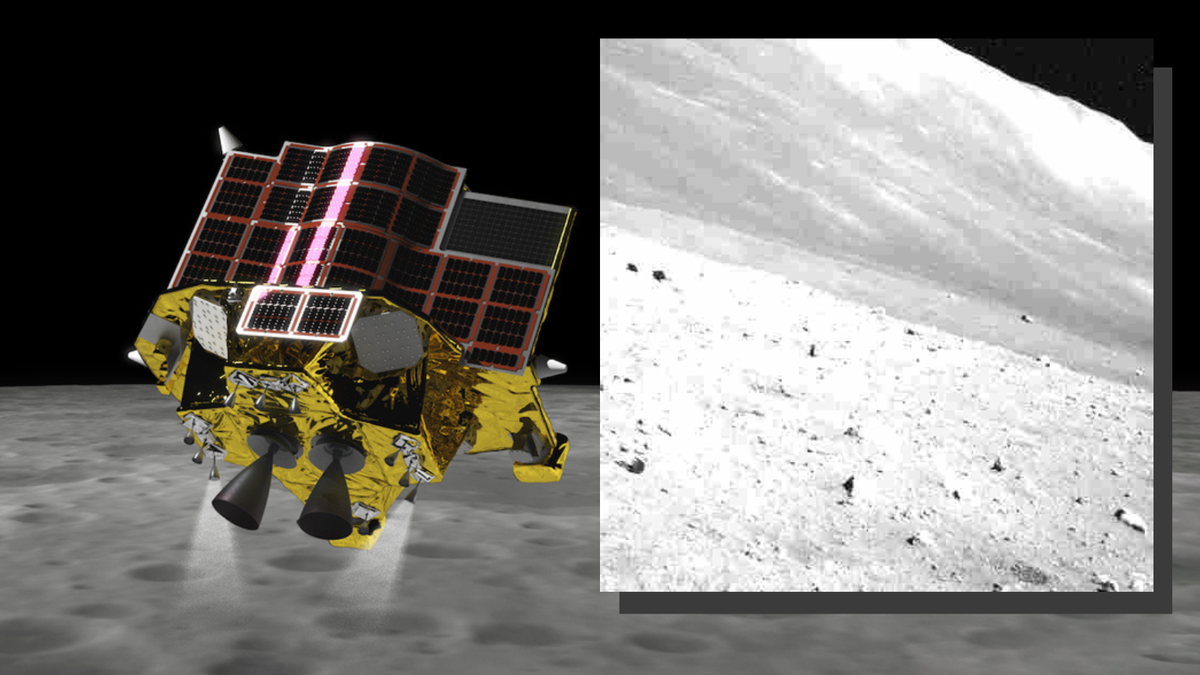Survival of the Smart Lander for Investigating Moon (SLIM)
The Smart Lander for Investigating Moon (SLIM) has accomplished a remarkable feat by surviving its third week-long night on the moon, defying extreme temperatures plunging to as low as minus 274 degrees Fahrenheit (minus 170 degrees Celsius). Although the Japanese lunar lander was not originally built to endure such harsh conditions, the Japan Aerospace Exploration Agency (JAXA) announced that SLIM had successfully navigated its way through the challenging lunar night, withstanding the frigid environment.
Resilience and Reemergence
On April 23, JAXA shared an image taken by SLIM as it emerged from its third lunar night. The tweet translated from Japanese highlighted the lander’s survival, stating, “Last night (the night of April 23rd), we were able to successfully communicate with SLIM, which had started up again, and confirmed that SLIM had survived for the third time.”
昨晩(4/23 夜)、再び起動した #SLIM と通信することに成功し、 SLIM が3回目の越夜を達成したことを確認しました。早速航法カメラにて撮影した昨晩の月面の様子がこちらです。越夜後としてはこれまでで最も早い月齢での撮影のため、全体的に明るく影が非常に短くなっています。 #JAXA #たのしむーん pic.twitter.com/U0f88xNK9S
Despite facing an initial setback upon landing on January 19, 2024, when it tipped forward and disrupted its solar panel orientation, SLIM has defied the odds by maintaining its critical functions on the moon. This unexpected resilience has been demonstrated repeatedly, with SLIM successfully completing its first lunar night from January 31 to February 15, and subsequent nights on February 29 and in mid-March.
Continuous Monitoring and Data Collection
JAXA emphasized the importance of closely monitoring SLIM’s condition to identify any potential areas of deterioration based on the lunar day and night environment. The agency aims to leverage the data collected by SLIM to enhance our understanding of lunar geology and landing technology, paving the way for future space exploration missions.
🚨 I found @SLIM_JAXA using the Orbital high-resolution camera of @isro on board Chandrayaan-2. The below picture was captured on 2024.03.16 at a pixel resolution of 16cm per pixel! Because of the low elevation of the sun, you see long-drawn shadows. I’ve shared three… pic.twitter.com/9PIeAoFuVb
Furthermore, independent researchers like Chandra Tungathurthi have been instrumental in leveraging existing resources like the Chandrayaan-2 orbiter to support missions like SLIM. Tungathurthi’s contributions, including capturing images of SLIM’s lunar surface activities, highlight the collaborative nature of scientific exploration and discovery.
In conclusion, the persistence and adaptability displayed by SLIM underscore the significance of pushing the boundaries of space exploration technology and capabilities. As we continue to unravel the mysteries of the moon and beyond, endeavors like SLIM serve as beacons of human ingenuity and curiosity in the vast expanse of space.
Image/Photo credit: source url





